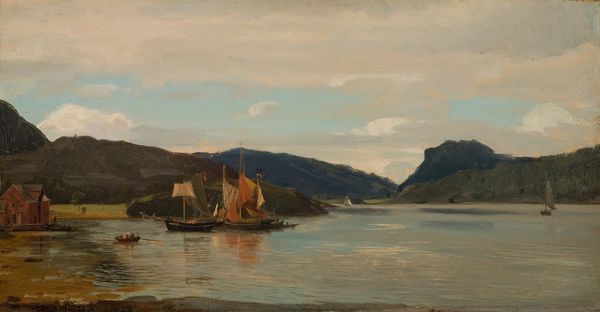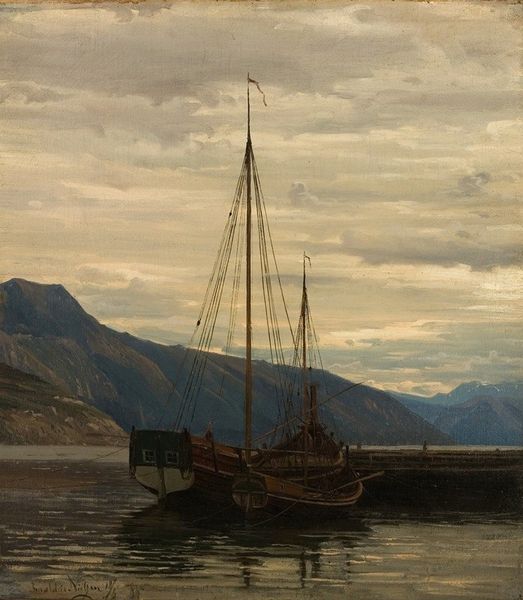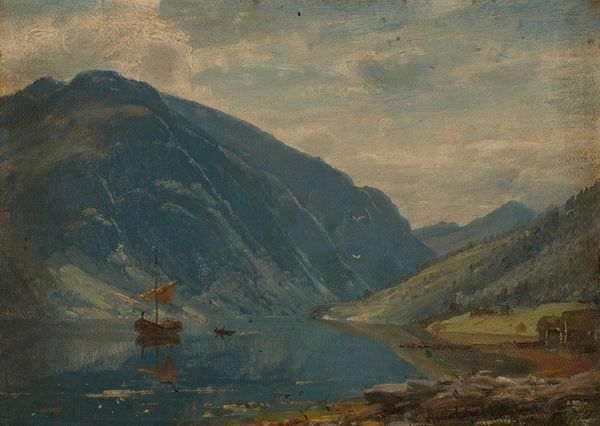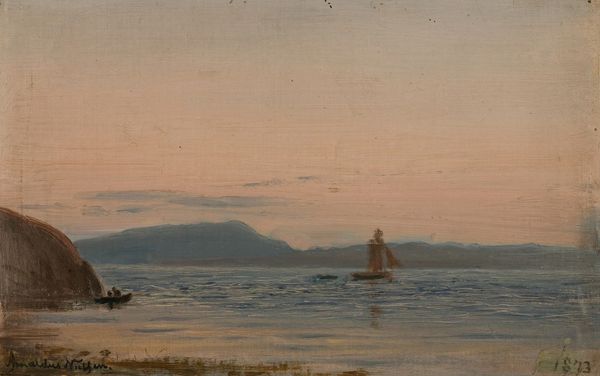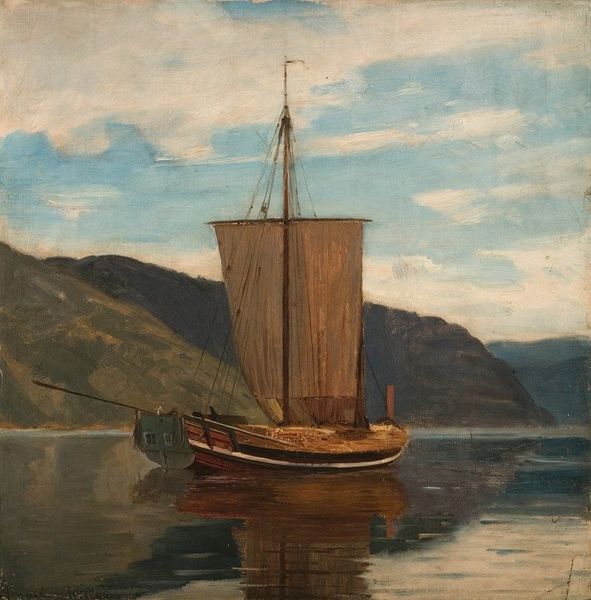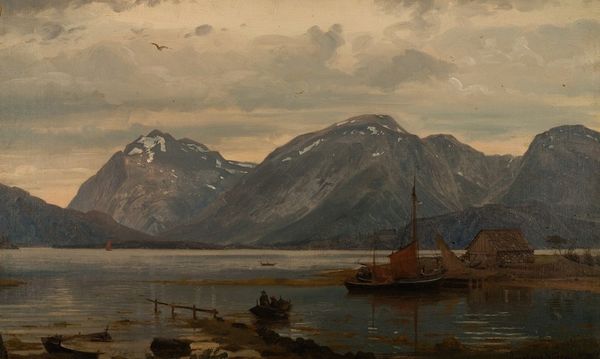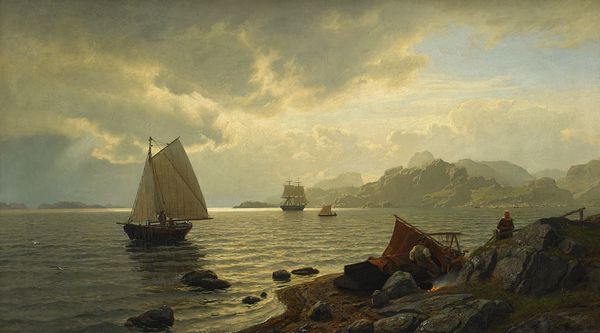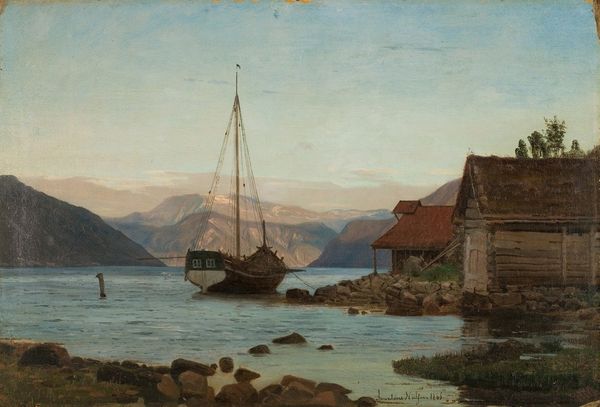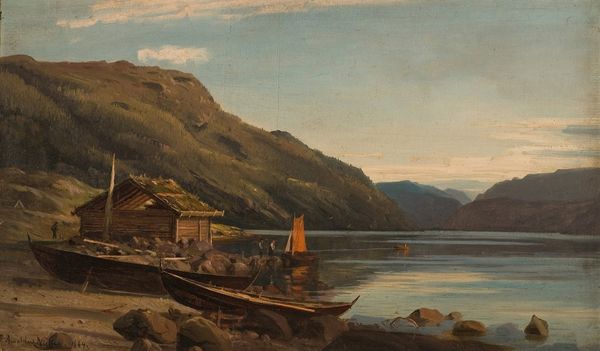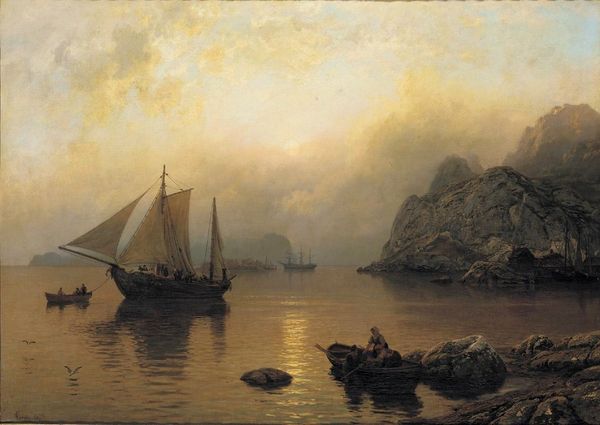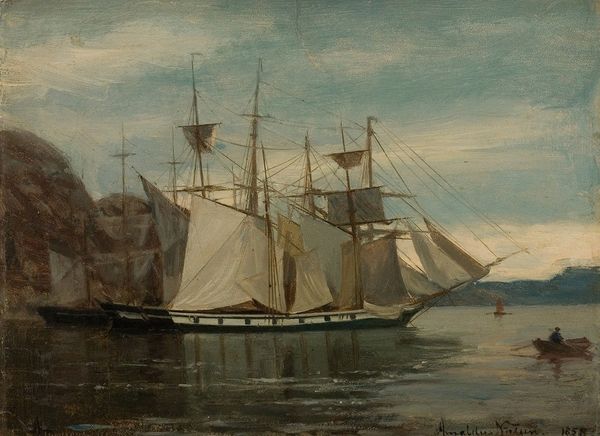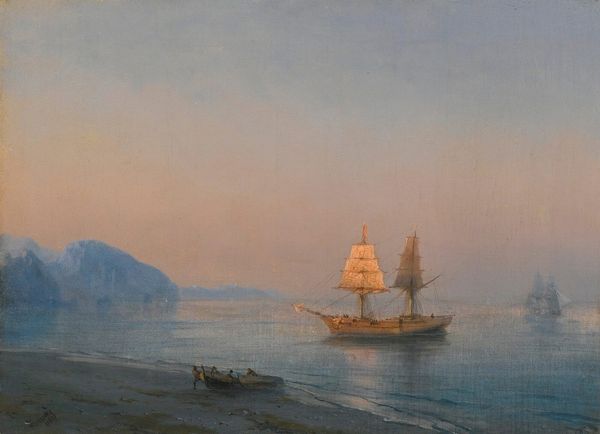
Copyright: Public Domain: Artvee
Editor: So, this is "Parti fra Terøen," an 1863 oil painting by Amaldus Nielsen. I find the subdued colors and calm water really peaceful. What do you see in this piece? Curator: Immediately, I’m struck by the visible labor embedded in this tranquil scene. We have the material reality of oil paint itself – pigments ground and mixed, applied to canvas, a commodity produced and circulated. Consider the societal function: This is not just a landscape, but a portrayal of Terøen, likely intended for a specific, consuming audience. How does Nielsen’s artistic labor reflect the social and economic structures of 19th-century Norway? Editor: I guess I hadn't thought of it like that. More about...the paint as a manufactured item, or the act of painting as a kind of work. It just looks so idyllic! Are those fishing boats? Curator: Precisely! Were they fishing boats owned by wealthy merchants, or small boats owned by independent fisherman, scraping a living? It’s not possible to be certain, but consider the materials used in shipbuilding, the resources required for their maintenance, and the societal roles assigned to those who toiled on the sea. Editor: Right, the means of production, even down to the canvas and pigments. I hadn't considered how many layers of labor and access were needed for such a picture, even *before* we think about it as "art." So, looking at the work of art through its historical labor relationships changes my reading of its aesthetics. Curator: Indeed. By interrogating the materiality and the processes of production behind "Parti fra Terøen," we can begin to challenge the art historical narratives that elevate the artistic genius over considerations of labour, economic systems, and material resources that made the work possible. We understand that this beautiful landscape is rooted in material realities.
Comments
No comments
Be the first to comment and join the conversation on the ultimate creative platform.
